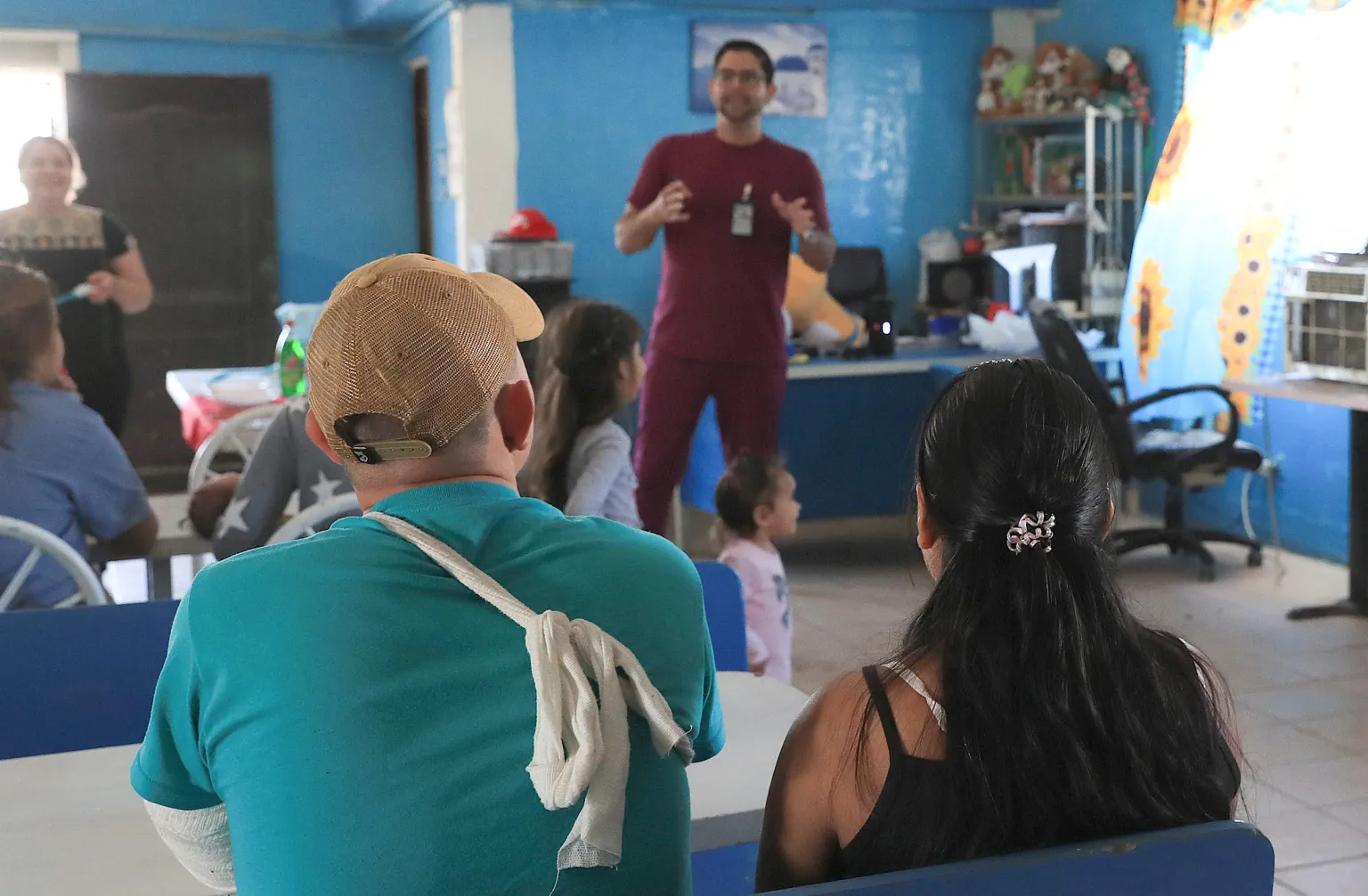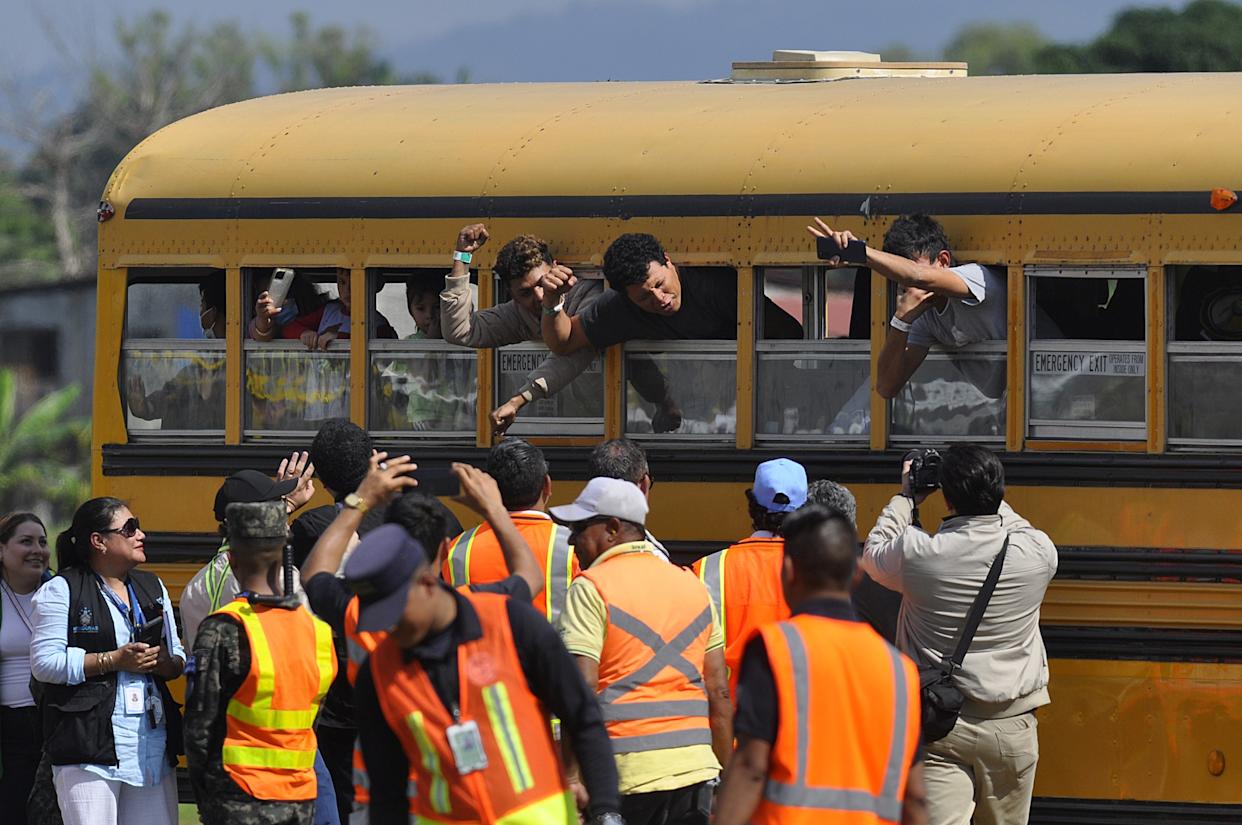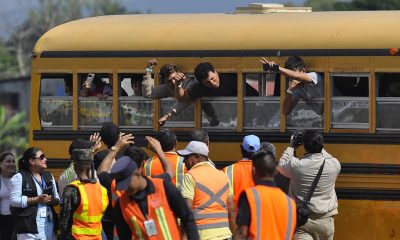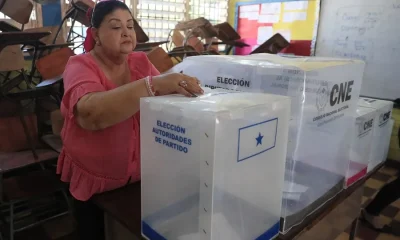International
Migrants at the border suffer post-traumatic stress after the violence in Mexico

Citizen associations warn of an increase in post-traumatic stress syndrome (PTSD) in migrants stranded on the northern border of Mexico in the face of cases of kidnapping, abuse and exploitation they experience when crossing Mexican territory.
Migrants present this psychological disorder that arises in response to extremely stressful events, and is characterized by symptoms such as retrospective sequences or flashbacks, nightmares, intense anxiety and difficulties in sleeping or concentrating.
The biggest trigger is kidnappings, Sara Villegas Torres, a lawyer for the Jesuit Refugee Service in Ciudad Juárez, one of the epicenters of migration on the border of Mexico with the United States, told EFE.
“What we have mostly detected is the issue of kidnappings, not only here in the entity (Chihuahua) but throughout Mexico, it is inevitable to encounter these stories because it is something that happens to most of the people with whom we have contact,” he described.
In July alone, there were two massive kidnappings of a total of 36 migrants in Chihuahua, according to the organization Alto al Secuestro, which documented a total of 196 foreigners kidnapped in the seventh month of the year, a monthly increase of more than 20%.
This organization reported 772 kidnappings of migrants in 2023, representing about a third of the total national victims of this crime.
This leaves sequelae in people like Cindy Vázquez, from Honduras, who told EFE how a crime cartel kidnapped the group with which she was traveling in Mexico.
“They told us ‘drem down’. But we thought it was the Police or Migration, because we had no problems with migration. But when they got us down and got us up, I lost all my belongings, I lost everything because I didn’t have time to take anything out of the lower part of the bus. And when they got us into a car, even then I knew we were kidnapped,” he said.
They were transferred to a warehouse, 15 minutes away before reaching the state of Chihuahua, where there were also many people kidnapped, according to him, and his family had to give a rescue.
“They told us that we were deprived of our freedom and that we were going to be there as long as our family paid a ransom. Our family had to pay a lot of money,” he said.
He mentioned that the kidnappers were wearing a uniform, brown pants and a navy blue shirt with a shotgun on the back, but without official logos.
In the end they were able to leave with a payment of 10,000 dollars for her and her family, so she warned her compatriots that it is very dangerous to go through Mexico.
“We just wanted to get to a better place, that we could work, that we could start from scratch, but no, the truth is that I wouldn’t stay living in Mexico,” Cindy said.
Another case is that of Roxana Yamilet Velázquez, originally from El Salvador, who described the difficult road she and two other relatives, her cousins Diego José and Adriana Elizabeth, who died in the desert of the northern border of Mexico.
“It gave him like a heat respiratory arrest and from there we were transferred, well, Migration grabbed them and took us to a hospital because we were dehydrated,” he said.
He said that the sand was very hot to the point of burning his skin, and the water they carried in bottles boiled after a short time due to temperatures that reached 40 degrees.
“It was boiling, already very hot, we couldn’t drink or anything and my cousin started fighting about halfway. Even me too, and she couldn’t resist, because she was the one who fought the most,” Roxana recalled about how her cousin’s life was going.
These events occur in the midst of a 193% year-on-year increase in irregular migration through Mexico in the first half of the year to over 712,000 people, according to the Government’s Migration Policy Unit.
International
Meta Says Russia Seeks to Ban WhatsApp for Defending Secure Communication

U.S. tech giant Meta, the parent company of WhatsApp, said that Russia is seeking to ban the messaging app because it “challenges government attempts to violate people’s right to secure communication.”
Russian authorities have encouraged citizens to switch to state-backed applications, and in August they already blocked WhatsApp’s calling feature.
On Friday, the communications regulator Roskomnadzor claimed that the platform was being used to “organize and carry out terrorist acts in the country, recruit perpetrators, and facilitate fraud and other crimes.”
“If the messaging service does not comply with Russian law, it will be completely blocked,” the regulator warned.
WhatsApp remains one of Russia’s most widely used messaging services, alongside Telegram.
Moscow is pressuring both platforms to grant authorities access to user data upon request for investigations into fraud and activities the government labels as “terrorist.”
Human rights advocates fear the demand could be used to target critics of the Kremlin, President Vladimir Putin, or the war in Ukraine.
International
Archbishop Wenski criticizes Trump’s deportation policies, calls for stronger push for reform

The Archbishop of Miami, Thomas Wenski, has called for increased pressure on the U.S. Congress to advance comprehensive immigration reform and criticized President Donald Trump’s mass deportation policies, arguing that they “do nothing to help.”
“We need to apply more pressure on Congress so lawmakers can make the necessary changes. It is also important for the Administration to listen to our voice. We do not want to be anyone’s enemy—we are Americans,” Wenski said in an interview with EFE.
The religious leader, who heads one of the dioceses with the largest Latino and Haitian populations in the United States, issued a call to defend the rights of migrants. He also emphasized that the U.S. Conference of Catholic Bishops (USCCB) has maintained a strong and public stance in favor of migrants for decades.
International
Trump relaunches diplomatic push to finalize U.S.-Backed peace plan for Ukraine War

U.S. President Donald Trump announced on Tuesday that his diplomatic team will resume meetings with delegations from Russia and Ukraine in an effort to pressure both sides to accept the peace plan proposed by Washington to end the war in Ukraine.
As part of this new round of talks, U.S. Special Envoy Steve Witkoff will travel to Moscow to meet with Russian President Vladimir Putin. Meanwhile, Army Secretary Dan Driscoll will hold discussions with Ukrainian representatives to narrow differences on the remaining points of the agreement.
Trump also confirmed his intention to meet personally with Ukrainian President Volodymyr Zelensky and with Putin, though he emphasized that such meetings will only take place “when the agreement is fully finalized or in its final stage.”
The president claimed that his administration has made “tremendous progress” toward resolving the conflict and reiterated that the war “never would have started” if he had been in the White House at the onset of the crisis.
The U.S.-backed peace plan consists of 28 points and has been revised following feedback from both sides. According to Trump, only “a few points of disagreement” remain under active discussion.
One of the most controversial aspects of the proposal is the suggestion that Ukraine cede parts of the Donbas region to Russia and limit the size of its armed forces. Kyiv is working closely with Washington to soften these clauses in search of an arrangement that does not compromise its sovereignty or security.
With this diplomatic push, Trump aims to solidify his role as the main mediator in the conflict and steer the war toward a political resolution after years of devastation, humanitarian crisis, and rising global geopolitical tensions.
-

 International4 days ago
International4 days agoTrump relaunches diplomatic push to finalize U.S.-Backed peace plan for Ukraine War
-

 International4 days ago
International4 days agoBolsonaro misses appeal deadline, faces imminent prison order by Brazil’s Supreme Court
-

 International4 days ago
International4 days agoMan pleads not guilty in Liverpool parade incident that injured more than 130
-

 Central America2 days ago
Central America2 days agoPanama reinforces security with new helicopters and Super Tucano Aircraft purchases
-

 International4 days ago
International4 days agoMacron to announce new voluntary military service amid rising security concerns in Europe
-

 Central America2 days ago
Central America2 days agoTrump urges hondurans to back conservative candidate Nasry Asfura in november elections
-

 International2 days ago
International2 days agoArchbishop Wenski criticizes Trump’s deportation policies, calls for stronger push for reform
-

 Central America13 hours ago
Central America13 hours agoTrump Pardons Former Honduran President Hernández and Warns of Aid Cuts Ahead of Election
-

 Central America2 days ago
Central America2 days agoWashington calls for oversight as Honduras faces allegations of electoral interference
-

 International13 hours ago
International13 hours agoMeta Says Russia Seeks to Ban WhatsApp for Defending Secure Communication






























